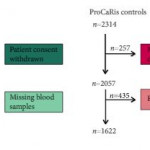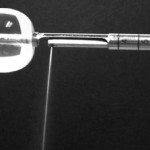Immunotherapy in urological malignancies: can you take your knowledge to the next level?
In this month’s issue of the BJUI, we highlight the evolving era of immunotherapy in solid tumour therapy. As urological surgeons, we spend a large portion of our time working with anatomy, instruments, and robots – things we can see, touch, and control. Immunotherapy is a different conversation – cartoon pathways, process blockades, molecular expression levels, combination therapies, and treatment resistance. Curing a patient with a successful operation is a major draw to our field, but we know our limitations when faced with lethal variant prostate cancer, and high-grade/high-stage bladder and kidney cancers in particular. Systemic therapies have been around for decades and are part of our guidelines – so why all the excitement over immunotherapy?
Our highlighted articles are a review from Mataraza and Gotwals [1] and a comment from Elhage et al. [2]. I urge you to start with the review article [1] and give it a full line-by-line read. You may need to pull out pen and paper, and practice spelling and pronouncing a number of new compounds. They may sound as awkward as abiraterone did the first time you heard of it years ago but will eventually become familiar and attached to yet another catchy trade name from pharma. Here is a quick list/homework assignment: ipilimumab, nivolumab, pembrolizumab, pidilizumab, atezolizumab. Another 20 or more are in development. Challenge yourself to write out their pathways, and you may re-learn a thing or two about familiar agents like sipuleucel-T, interferon α, and interleukin 2.
A major theme in both articles is the experience with immunotherapy in advanced melanoma. The enticing message is that a cohort of patients with metastatic melanoma treated with ipilimumab survived 3 years and the Kaplan–Meier curves plateau out to 10 years. This observation sparks different possible futures such as immune ‘memory’, durable response, and ultimately the word we like to use in surgery – cure.
The picture in urological cancers is not entirely as rosy as the melanoma Kaplan–Meier curve. Multiple trials are highlighted by our review with familiar themes of single agent trials, combination immunotherapies, and combined immunotherapy plus anti-angiogenesis agents. Many trials enrol heavily pre-treated populations with limited remaining options. Many endpoints still observe responses followed by resistance patterns. An important theme to follow is the coupling of biomarkers that link expression to treatment response (i.e. predictive vs prognostic), and the USA Food and Drug Administration (FDA) has approved such a biomarker for nivolumab response. However, even this story line is perplexing, as drug response is not always linked to the marker, and immune cell expression may be ‘inducible and dynamic’ [1].
Last step – re-read the review and comment articles and see if you can write down some key agenda items for future immunotherapy. How are checkpoint inhibitors different from vaccines? How do we generate a durable immune response? What is the ‘abscopal effect’? What are three major areas of research and development in immunotherapy?
If you can spend the time on these articles and ponder these challenging questions, you will move up to the next level of understanding and enjoy a greater appreciation of the next abstract you hear at a major meeting. In closing, I am reminded of the oft-repeated words from the hit television show Game of Thrones (based on the novels of George R.R. Martin) from the House Stark: ‘Winter is Coming’. In urological oncology, ‘Immunotherapy is Coming’, so be prepared!
BJUI Associate Editor Urological Oncology
References



